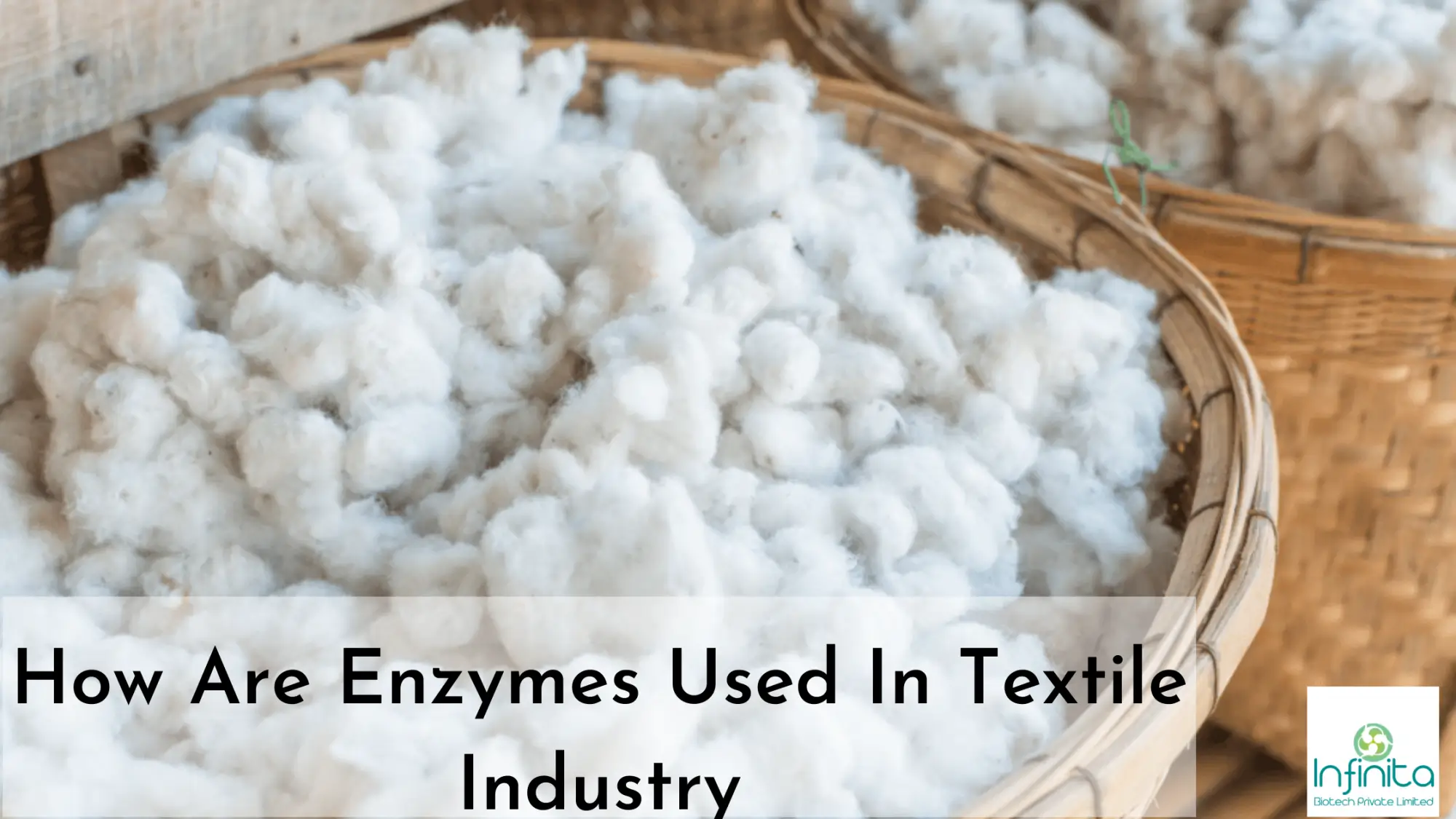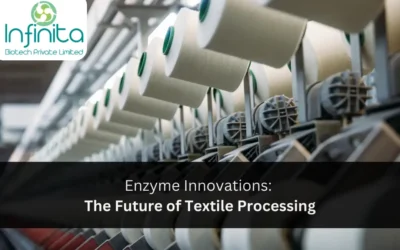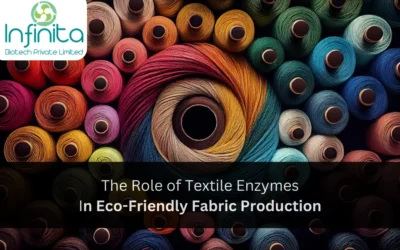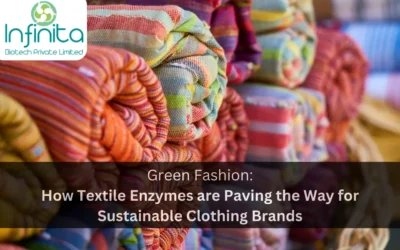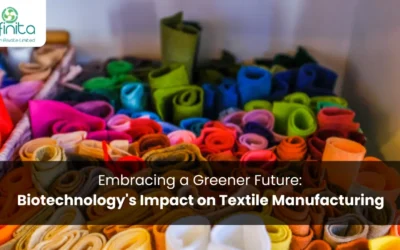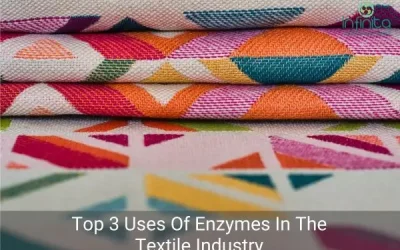Enzymes are biocatalysts and used increasingly in the textile processing industry. These enzymes are non-toxic and environmentally sustainable and help reduce pollution which happens due to textile production. The specific textile enzymes used are amylases, catalase, and laccase for removing the starch, degrading excess hydrogen peroxide, textile bleaching, and lignin-degrading. Enzymes like cellulases are used for denim finishing and lactases are used for the decolorization of textile effluents and their bleaching. Using enzymes is efficient and they are used for a specific compound or substrate. Enzymes can be used at room temperature and milder conditions and help reduce wastage of water, energy, and time. Furthermore, the resultant finished products are of higher quality.
Enzymes Used in Textile Industry
Enzymes are an important requirement in textile processing. Enzymes are biocatalysts and used to speed up the chemical reactions without undergoing the chemical reactions themselves. Enzymes are applied in two phases of textile processing. The amylases are used in the preparatory finishing phase for de-sizing and in the finishing phase cellulases are used for softening of textiles, decreasing the piling of cotton textiles, and for bio-stoning. Enzymes like proteases, pectinases, lipases, xylanases, and catalases among others are used for denim fading, bio-polishing, and scouring and removing of peroxides.
Benefits of Using Enzymes in Textile Processing Industry
Given below are some of the benefits of enzymes for textile industry.
1. Enzymes quicken the process by accelerating the rate of reaction.
2. Enzymes can be recycled as catalysts as they accelerate the reaction without any change in their chemical structure.
3. Enzymes can be used at room temperature and milder conditions and are easy to use and control.
4. Enzymes are an eco-friendly option to toxic chemicals, these are bio-degradable, non-polluting, and safe to use.
5. Enzymes work on specific substrates or compounds only. So, there is no issue of one enzyme interfering with the other’s process and messing up the textiles.
Enzymes Used in Textile Processing
Some of the important enzymes for textile industry are amylases and cellulases which belong to the hydrolases class of enzymes. Other enzymes used in textile processing are laccases and peroxidases which belong to the oxidoreductase group of enzymes. Let us look into ways enzymes help in the textile industry.
1. For Textile De-sizing
Bio enzymes like amylases are used for textile de-sizing. When producing cotton textiles starch and other sticky materials are used (collectively called ‘Size’) for weaving cotton fabrics. This starch is removed by textile processing with enzymes like amylases. Before enzymes were introduced, corrosive substances like salt were used at very high temperatures for the de-sizing process. This resulted in fading and weakening of the cotton fabric. Amylases are used at mild temperatures without any of these drawbacks. Now the cotton textile is ready for dyeing and wrapping up.
2. For Canvas and Denim Finishing
Denim products like jeans, shirts, and jackets are ‘finished’ or faded to various degrees for achieving the ‘denim look’. This is done by stone and acid washing the denim products by putting them in big washing containers along with large stones, chlorine, bleach, and potassium permanganate. This will achieve a soft and faded look but weaken the integrity of the fabric. To prevent this, cellulases are introduced. They quicken the fading of the fabric from the outside and leave the inside part intact.
3. For Bio Finishing and Polishing
Bio-finishing and polishing mean the washing of different textiles like cotton, rayon, linen, etc. before they are ready for packaging. Bio-washing and polishing prevent the ‘pilling’ or loads of fluff accumulating on the textiles which bring about an undesirable appearance of cloths. Textile enzymes like cellulases hydrolyze the microfibers and remove them from the outer surface of the fabrics leading to a polished and smoother surface.
4. For Enzymatic Bio-Scouring
Bio-Scouring means cleaning the non-cellulosic material from cotton textiles. For this purpose, cellulase and pectinase are mixed and used. Pectinase separates the material from the cotton fibers and cellulase deconstructs it.
5. For Enzymatic Bleaching of Textiles
Cotton and other textiles are bleached to remove the color and making the textiles white. Usually, hydrogen peroxide is used as a bleaching agent which leads to fabric damage and high use of water during the process. Using textile enzymes like pectinases, amyloglucosidases, and glucose oxidases for bleaching leads to less fiber damage and less water usage. These are compatible with the bleaching process due to their operating temperature range and active PH.
Conclusion
Textile processing with enzymes leads to less pollution and is an eco-friendlier option than using harsh chemicals. This is a clean process readily embraced by the textile industry. Using enzymes also reduces water wastage and uses less energy. Since enzymes are non-toxic the water can be reused after cleaning. Saving energy means money saved and thus increased profits. Protection of workers from toxic and carcinogenic chemicals leads to fewer leaves taken, less medical costs, and thus more productivity in the long run.
